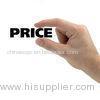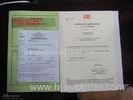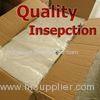5 Steps Easy Sourcing From China Factory Visit Check Suppliers
| Place of Origin: | Hongkong, China (Mainland) |
|
|
|
| Add to My Favorites | |
| HiSupplier Escrow |
Product Detail
<span style="font-family:arial,helvetica,s
5 Steps Easy Sourcing From China Factory Visit Check Suppliers
China has already been the world’s factory after over 30 years industrialization. No matter you like it or not, you cannot avoid dealing with China and Chinese companies. As a result, over 60% of the commodities are imported from China. Due to the big geographic distance, time difference and cultural barriers, import is one of the most profitable businesses in many countries. Many people have been importing from China, while others have just started to do so.
Many people have learned a lot from magazines offering advice or a commentary about the do’s and don’ts of sourcing products from China. Some of them are effective, some of them are simply based on generalizations that may or may not be true across the board.
As a Chinese working with different factories and with importing companies around the world, I’d like to share some inputs based on my real experience on solving problems for both suppliers and customers. I believe it’s quite useful no matter you’re a China sourcing veteran or a freshman.
Step 1- Search from the internet, sourcing magazines or trade fairs-
There are many potential suppliers from the biggest search engines such as Google. You can also get good resources from the sourcing platforms like Alibaba, Global Sources, Made-in-China, etc. Short list a few suppliers for the items you’re going to source. There are so many big international trade fairs in both Asia and your local countries. This is not difficult to understand so I go to step 2.
Step 2- Clean your mind-
You may have the question, clean my mind? Yes. From tons of my conversations with customers from all around the world, many western people have more or less some prejudice about China, Chinese culture and Chinese products! The western media are keen to bring explosive and bad news to the public to catch people’s eyeballs. They see more broken bridges, explosion and corruption than any other news, a lot of journalists have never been to China and give their thoughts from the views written on the books which had been published 10 or 20 years before!
Many people believe “Made in China” represents poor quality, low price, and China is always cheap, cheap, and cheapest around the whole world!
This makes a lot of problems, because a lot of people who come to China to buy products cannot easily change this from their mind, they just try to be the best price killers. This gives chances to some companies that are not so honest or even scammers. So you’ll see incredibly cheap price sometimes, and when you bargain with them, they try to promise you everything—just to get your order!
Yes, there does exist many low quality manufacturers, but there are many high quality suppliers as well, like Foxconn (it produces for Apple) and Huawei. There are always medium quality producers as well. In my word, China is a place of manufacturers with mixed quality levels.
So, as a professional sourcing personnel, always try to get the first hand information by yourself, do adequate homework about the products, technologies and whole industry and supply chain.
Step 3- Visit and check the suppliers and factories-
When you finish step 2, you’ll have a general idea about the products you’re going to source, but probably you’re tangled with a lot of clues.
Now, it’s time for you to clear them all. Make a plan to meet the short-listed suppliers. It’s always important to meet the people face to face when dealing with them. Seeing is believing. This is the most efficient way to understand your suppliers. By talking with them, looking into their facilities and equipment, you can understand if you’re going to work with the most professional people or not. If you don’t have the time and budget to check the suppliers by yourself, at least you should get a trusted local company or individual to visit on your behalf. This is quite important to reduce the risk of being scammed.
Step 4- Get samples for testing from suppliers-
Get samples from verified suppliers to test. Don’t rely on the reports from the factories—many of them are faked, or made by Photoshop. Do the testing by yourself or send to a trusted third-party lab.
Step 5- Track the process and inspect the goods before paying
Make sure to keep an eye on what you’ve ordered. Many medium- small business operators, for whatever reason, don’t always pay adequate attention on this, they simply sign a contract with the supplier, then go to the beach enjoying sunshine, but at the end, they find out their goods are delayed, and quality is not satisfied, etc.
Besides of the process control, always do your due diligence when you choose a supplier, and inspect the goods by a trusted QC inspector, before making the payment. I’ve been hearing quite some customers tell me they receive a full container of rubbish or something that is not what they asked for at all.
-
6 Tips About Doing Business Internationally
-
5 Steps Easy Sourcing from China
-
Why China Suppliers Often Give You Wrong Quotes?
-
Four Most Common Frauds in China
-
Is it possible to get good quality products in China?
-
Things Should Not Do and Should Do When Doing Business in China
-
Planning Your Business Trip to China
-
Why Small Enterprises Are Sourcing From China?
-
Why a Sourcing Agent is Better Than Trading Company
-
Why to Use a Sourcing Agent in Shenzhen to Source Electronics
-
10 Easy Steps to Filter Potential Scammers
-
DIY vs. Third Party Quality Inspection in China
-
Qualities of Good China Sourcing Service Providers
-
Quality Inspections China Products Should Undergo
-
Important Steps Involved in Quality Inspection in China
-
Three Things to Consider in Hiring a Sourcing Agent Shenzhen
Related Search
Find more related products in following catalogs on Hisupplier.com

Company Info
WorldVillage Intl Co.,Limited [China (Mainland)]
Business Type:Manufacturer
City: Shenzhen
Province/State: Guangdong
Country/Region: China (Mainland)
You May Like:
Sitemap XML
About HiSupplier Help Center Customer Service Friend Links Site Map Archives
Browse by: China Suppliers - Hot Products - Products Directory - Offers Directory - Suppliers Directory - Buyers Directory
Language Option: العربية - Nederlands- Français- Deutsch- Italiano- 日本語- 한국의- Português- Pусский- Español


























































































































































